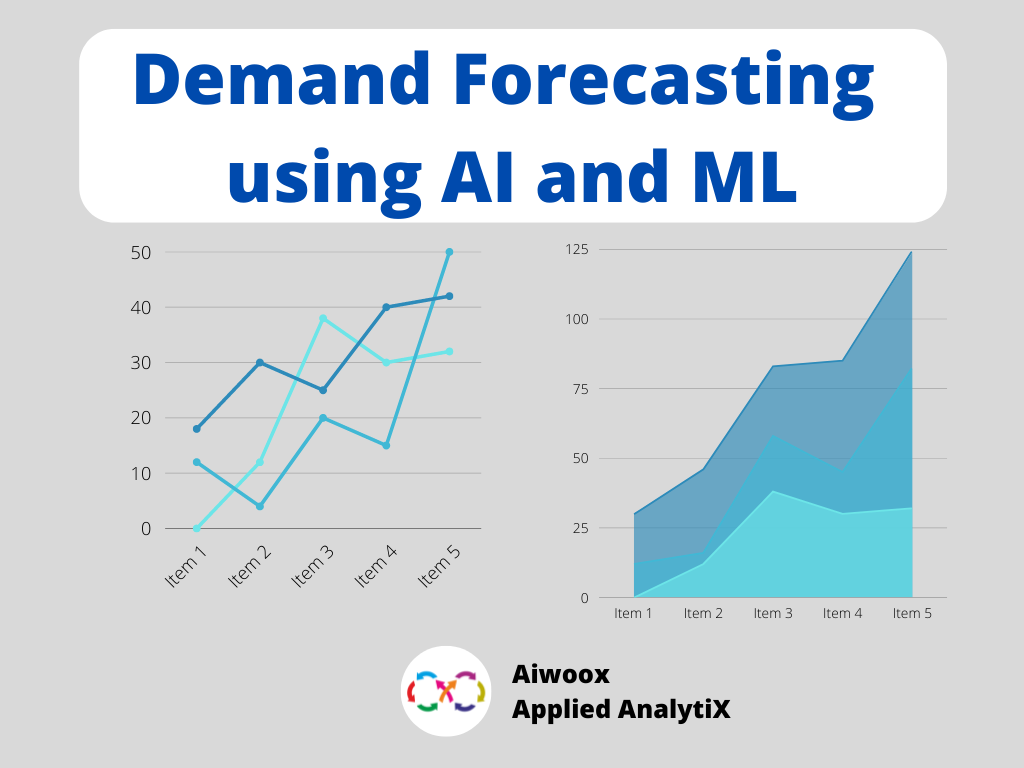Demand forecasting using AI and ML
Demand forecasting is the process of making estimations about future customer demand over a defined period, using historical data and other information.
Proper demand forecasting gives businesses valuable information about their potential in their current market and other markets.Without demand forecasting, businesses risk making poor decisions about their products and target markets and it will cause negative effects on inventory holding costs, customer satisfaction, supply chain management, and profitability.
Companies that are excellent at demand forecasting have 15% less inventory, according to Gartner. Better order fulfillment by 17%. Cycle times from cash to cash are reduced by 35%.
Need for Demand Forecasting
Demand forecasting helps reduce risks and make efficient financial decisions that impact profit margins, cash flow, allocation of resources, opportunities for expansion, inventory accounting, operating costs, staffing, and overall spend.
As all strategic and operational plans are formulated around forecasting demand. A company can use demand forecasting to make a variety of decisions, including organizing the production process, acquiring raw materials, and managing finances.A company can predict demand by using its own projections, known as guest projections.
Methods of Demand Forecasting
There are 3 types of Demand Forecasting:
Qualitative forecasting :Qualitative forecasting is an estimation methodology that uses expert judgment, rather than numerical analysis.
Time series analysis : A particular method of examining a set of data points gathered over a period of time is called a “time series analysis.”
Causal models : Causal modeling is the use of independent explanatory variables to predict demand.
The Issue in Business
Demand volatility in relation to demand forecasting is one of the main problems facing business executives today.
Although data is more readily available than ever, client purchase patterns are growing more complicated and are therefore more difficult to identify or anticipate.
Customers regularly change their views because of too many elements impacting demand, such as weather changes and social media influence posts. Even worse, circumstances that alter client intentions can occur fairly unexpectedly.
Traditional forecasts are only as accurate as the information, models, tools, and people interpreting them (Symphony Retail, n.d.).
How might we then address these issues?
The Solution
Demand forecasting with AI
Artificial intelligence-based demand forecasting is a solution to the erratic nature of demand.Demand forecasting, which historically uses historical data to analyze the process of projecting client demand, is a type of predictive analytics. Machine learning algorithms can be used by businesses to accurately predict changes in as much consumer demand as possible.
These algorithms are capable of automatically recognizing patterns, locating intricate links in big datasets, and picking up indications of changing demand. Usually, organizations employ this type of AI to prevent operational process inefficiencies brought on by misalignment of supply and demand.
Sincerity tells me that this will never be entirely accurate. However, it can give businesses the chance to drastically cut supply chain expenses and improve financial planning, personnel planning, profit margins, and risk assessment choices.
Benefits
The following are the main advantages that demand forecasting with AI can offer to any manufacturing company:
Accuracy will increase over time: As machine learning algorithms gain knowledge from the data already available.
Higher customer satisfaction: Customers will be less satisfied when things are “out of stock,” but they will be more satisfied when products are constantly accessible. This enhances brand perception and consumer loyalty.
Improved workforce planning: Demand forecasting can support the HR department in making efficient considerations between full-time or part-time staff mixes, thus optimizing HR costs and effectiveness.
Better markdown/discount optimization: Cash-in-stock situations, where things remain unsold for longer than anticipated, are frequent in the retail industry. Higher estimated inventory costs and the possibility of products becoming out of date and losing value are frequently the results of this. Products are offered for sale in this scenario at lower selling prices.By using demand forecasting, this possibility can be reduced.
Overall efficiency: With demand forecasting, teams can focus on strategic issues instead of trying to reduce or increase inventories and staffing levels.
How AI will change demand forecasting in the supply chain?
- If only a company could look into the future to predict how much of their goods would be sold.If they know around Christmas or what products their customers are most likely to want, they could always make is the proper choice.
- For businesses willing to invest in machine learning and decision intelligence solutions, AI demands Forecasting has made this a reality. In the past, businesses have predicted product demand using forecasting models like ARIMA or Auto regressive Integrated Moving Average, but these They require a lot of manual labor and provide a potential for error.
- Businesses can analyze data much, much faster by using AI demand forecasting than they would by depending on humans and conventional forecasting frameworks.
- Additionally, it can automatically produce detailed projections that assist the business in making decisions, as well as find issues that a human could overlook internally or within a supply chain.
Conclusion
The way businesses manage their supply chains and make choices is changing as a result of AI demand forecasting.AI demand forecasting gathers and aggregates data sources, then examines them for trends and issues rather than depending on manual procedures. As a result, businesses may make decisions about anything from stock purchases to price markdowns using demand estimates that are supported by icy, hard data rather than on a whim. Peak assists businesses like yours in integrating AI demand forecasting into their digital systems to aid in making better decisions.
We name it “Decision intelligence” for this reason. We’ve worked with companies like KFC, AO, Foot asylum, and Speedy integrate this technology and make the most of it.They developed their tech stacks using our DI platform; you can read more about their success here.











